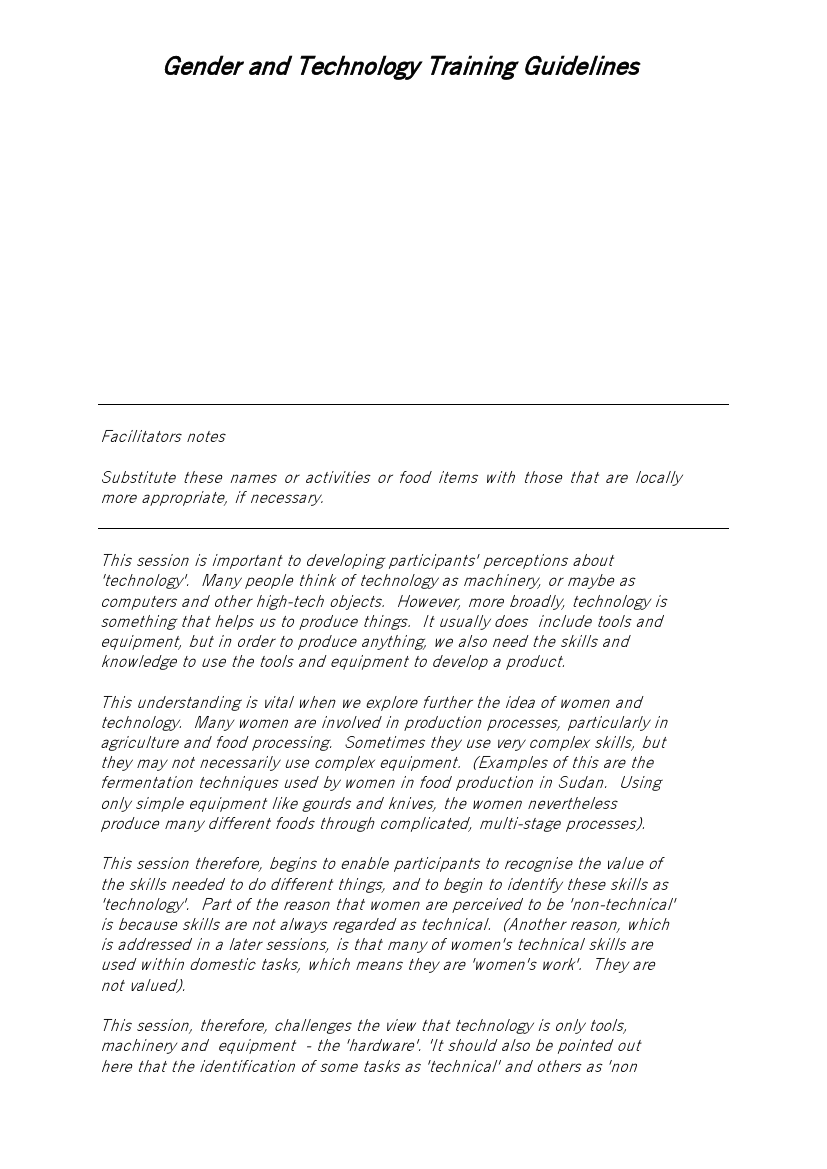
Step 4
Gender and Technology Training Guidelines
Ask the participants individually to take a sheet of paper and write what
they think is a definition of “Technology”.
Step 5
Ask participants to read out their definitions. Facilitator to write up on
newsprint.
Step 6
Together with the group, pick out key phrases and underline these.
Write them up separately.
Step 7-
Next using these phrases, develop one definition for the whole group, to
include at least skills, knowledge and equipment
Step 8Facilitator sum up after discussion.
Facilitators notes
Substitute these names or activities or food items with those that are locally
more appropriate, if necessary.
This session is important to developing participants' perceptions about
'technology'. Many people think of technology as machinery, or maybe as
computers and other high-tech objects. However, more broadly, technology is
something that helps us to produce things. It usually does include tools and
equipment, but in order to produce anything, we also need the skills and
knowledge to use the tools and equipment to develop a product.
This understanding is vital when we explore further the idea of women and
technology. Many women are involved in production processes, particularly in
agriculture and food processing. Sometimes they use very complex skills, but
they may not necessarily use complex equipment. (Examples of this are the
fermentation techniques used by women in food production in Sudan. Using
only simple equipment like gourds and knives, the women nevertheless
produce many different foods through complicated, multi-stage processes).
This session therefore, begins to enable participants to recognise the value of
the skills needed to do different things, and to begin to identify these skills as
'technology'. Part of the reason that women are perceived to be 'non-technical'
is because skills are not always regarded as technical. (Another reason, which
is addressed in a later sessions, is that many of women's technical skills are
used within domestic tasks, which means they are 'women's work'. They are
not valued).
This session, therefore, challenges the view that technology is only tools,
machinery and equipment - the 'hardware'. 'It should also be pointed out
here that the identification of some tasks as 'technical' and others as 'non
13